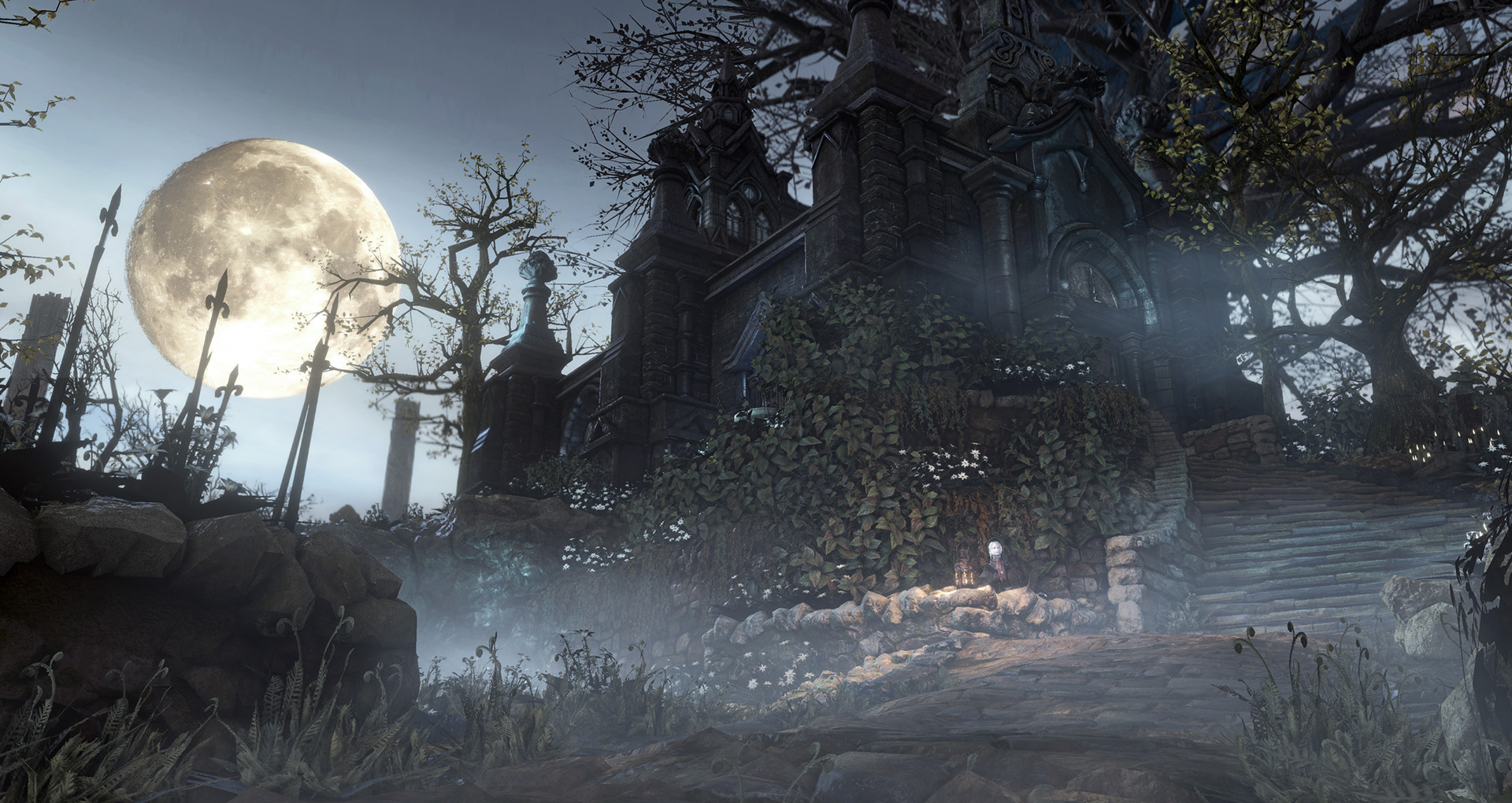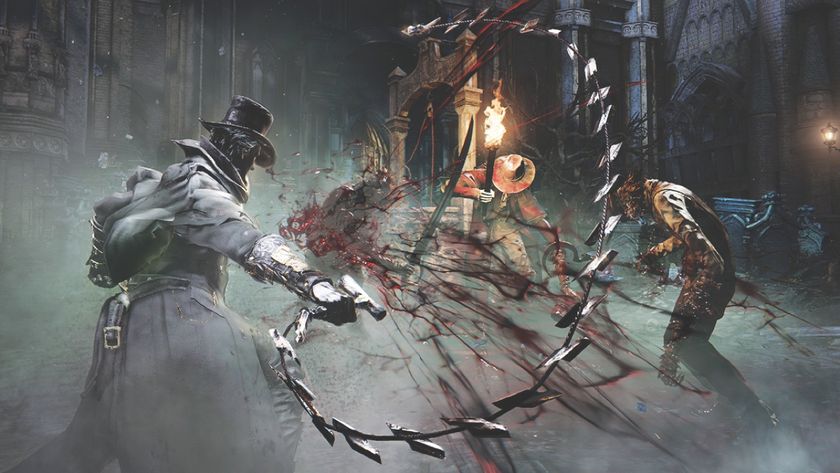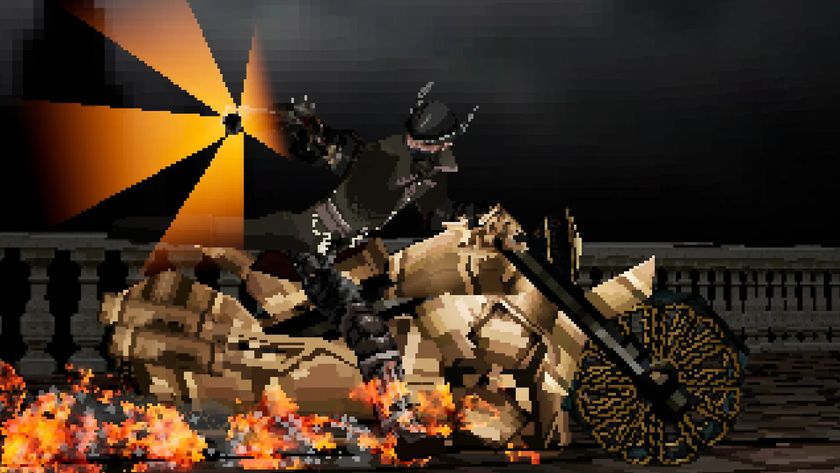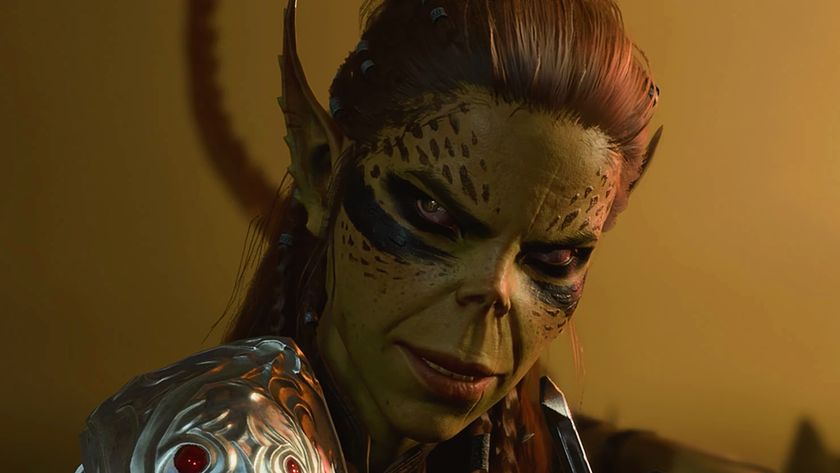12DOVE Verdict
An invigorated spirit occupying a reassuringly recognisable body, Dark Souls’ life force flows through Bloodborne’s revitalised veins. Intelligent and intense, it's simply PS4’s best exclusive game.
Pros
- +
Another masterpiece - Dark Souls reborn
- +
Gothic visuals rendered in extraordinary detail
- +
Firearms are effective
- +
explosive new weapons in your arsenal
- +
Randomised chalice dungeons boost the game's length
Cons
- -
Less incentive to experiment with different classes
- -
You cant level up at
- -
or warp between
- -
lamp checkpoints.
And for Bloodborne’s first trick: you awaken in a Victorian surgery after undergoing a blood transfusion administered by a shady, wheelchair-bound man. Suddenly you hear banging, then a guttural growl that chills the bones. A wiry, fur-matted werewolf stoops menacingly over a prone body, blocking the only exit. You've got two fists and a dapper suit - what to do? Well, die.
Doing so transports you to hazy netherworld the Hunter's Dream where you're stocked with weapons and sent back to kill the great beasts of Yarnham. Turns out it wasn't a trick at all - it was a lesson. That short loop was the game in a microcosm: teach, then test. You don’t so much play as learn.
From Software doesn’t stray far from its lineage, and as with Demon’s Souls and both Dark Souls games before it, Bloodborne follows a fundamental pattern: you cautiously enter a new, very scary area filled with fresh challenges and tough enemies. Dying often comes next. But then you return with conviction, armed with the vague understanding of enemy placements, traps, and attack patterns. Repeated visits firm your grip. Knowledge is power.
If you've played those games, it's incredibly easy to adjust to this one. Take the concept of blood, acting as both life force and currency. It lets you level up, fortify weapons, and purchase items. The catalyst of cautious play, fear of losing your bounty - you drop it when you die, and get one shot at retrieval - naturally increases the more you have, fuelling compelling rounds of risk and reward.
Dark Souls’ iconic bonfires are replaced by lamps, used for warping back to the Hunter's Dream (be warned, this replenishes the world with enemies). Get online and you’ll see ghostly recordings of other players doing their thing in other worlds, only now they’re called spectres. Leaving messages on the floor for the community to read isn’t done with soapstone, but a notebook. The effect is reassurance rather than repetition. As with Assassin’s Creed, familiar mechanics are transposed wholesale on top of different settings and styles. The apparatus is universal, even if the universe changes.
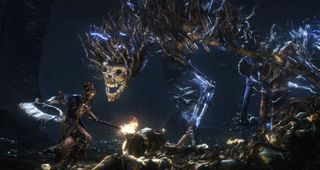
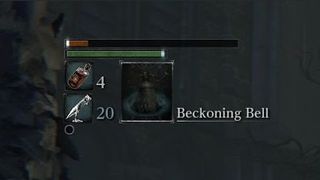
Since our review took place before From opened their servers to the rabble, I didn’t get to experience any co-op or PVP. You could write reams about these facets alone. How there’s no hollow/human system - you simply ring a bell (a carry item) and the game pulls up to two players into your game. How the covenants work. How you can now lock your sessions with passwords. I was online throughout, however, able to view notes and see spectres left by other players.
And what a universe. The bleak, oppressive, but somehow innately beautiful world of Yarnham aligns so perfectly with the disturbing energy of Demon’s and Dark Souls that it feels like the series’ spiritual home. It's both lulling dream and waking nightmare. Great black cathedrals rise to meet a low dead sun, damp cobblestone alleys reflect a forlorn moon, and thick mist envelopes innumerable crusted tombstones, tangled forests, and shrouded paths.
Still, I found myself stopping to drink in every view, and that isn't an accident. From Software composes each scene to show what lies ahead and behind. Look down and you’ll see the bridge you battled on hours ago; look to the horizon and the giant crumbling windmill you're trying to reach will loom like a beacon. It’s Bloodborne giving you pause to appreciate how far you’ve come. Nothing is empty set dressing.
Contrasting where you stood at the start, a clean and cowering runt with hand-me-down weapons, to your later fearless, blood-caked hero who’s survived whip-cracking NPC invaders, conquered wolf-infested hamlets, and trounced a parade of harrowing bosses, gives a real sense of progress. You don’t really have a motive, besides a vague opening line about unravelling the mysteries of blood ministration, but that mystery provides ample impetus.
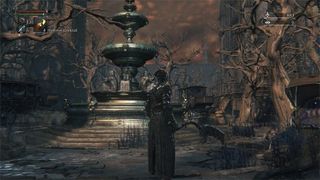
Opening a random door to link two previously disparate places is a mini victory, the map in your mind’s eye steadily forming. Yarnham is the evolution of the Resident Evil mansion. Of Metroid Prime’s Tallon IV. It's narrative irrevocably intertwined with geography. Rare benevolent denizens impart the stories surrounding Yarnham’s great beast hunt (most occupy houses, their interactivity signposted by purple lamplight). One involves a shrivelled hag in a cathedral, who asks you to advertise the building as a place of healing. After revealing its location to a suspiciously blood-soaked NPC, though, the next time I visit the hag she’s disappeared, potentially costing me a quality item or telling line of dialogue. Actions have repercussions. The act of exploration almost crosses into archeology, players dusting away layers of dirt to find hidden details.
But stopping and staring too long is folly, because creatures here want to make you into blood pudding. There’s the rank and vile - lame crows struggling pitifully on the ground before maiming you with broken wings, writhing corpses in rivers of waste waiting to pull you in - but it's the inconspicuous ones you want to watch for. Emaciated grave robbers scoop you into burlap sacks and hoist you to jail, and if the small giggling witches latch on they’ll carve into your face for three or four awful seconds.
3. Sucky McSuckington
“Watch out for the shaman” reads the message someone’s left directly before a hunched-over, pale figure in an alley. “Psh, whatever,” I think, brandishing my blunderbuss. It’s when I’m frozen then face-sucked by a surprise healthbar-eating head dong that I realise I’ve made a terrible mistake.
Subverting the shield and sword fantasy staple, here you're given a gun in the left hand and something sharp in the right - a pneumatic stake, an electrified bollier, a good old-fashioned extendable axe. That’s right, no blocking. To compensate you're now ninja-quick, able to sprint, roll, and unload violent flurries on a single burn of the stamina meter. Each weapon has a powerful charge attack, as well as a transformation you can trigger on-the-fly and thread into combos. Your cleaver, for instance, folds out into a fanged scythe.
Most firearms aren’t so much long-range alternatives to melee as reincarnations of the parry system, best shot off during enemy attacks to knock them backwards for a takedown. Faster combat means you're going to get hit, so now there’s a short window in which, after taking damage, you can strike back to regain health. It pays to be aggressive, because in Bloodborne, offense is the new defense.
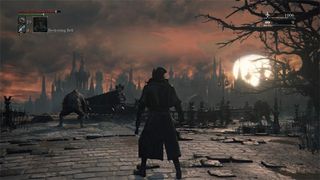
This high-risk philosophy permeates the entire game. For instance, whereas in previous games your souls stay where you died ready to be reclaimed, here a nearby enemy might steal your blood echoes. In killing it to return them, a passive mechanic becomes an active one. And rather than swigging from a healing flask that replenishes upon rest, you'll have to earn Bloodborne’s vials by killing things.
There’s one completely new challenge, however, in the form of chalice dungeons. Collecting materials allows you to perform a ritual at the Hunter’s Dream and create randomised fortresses you can share and tackle online. Roughly an hour long and composed of varied architecture, from ornate churches, to fertile gardens, to murky swampland, they extend an already 40-hour game potentially indefinitely.
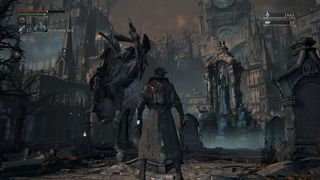
Only a few minor blotches spoil an otherwise immaculate picture. You have to travel back to the Hunter's Dream every time you want to level up, store equipment, or warp to a different lamp, which makes for weary process punctuated by loading screens. Also, clothing revolves around cloak and leather, lacking the creativity and variety of the Souls games. The class system isn't as divergent either. Flamethrowers, cannons, and stake guns are fine toys, but ones you don't have to spec towards, removing a degree of strategy. While combat is still incredibly rich, the lack of magic, miracles, pyromancy, archery, heavy, medium, and light options means less specialisation, which discourages experimentation.
Bloodborne lies somewhere between Dark Souls and Dark Souls 2, better than the latter but not quite as good as the former. The fourth time following the same template means the master strokes, however masterful they are, are anticipated. But take nothing away from this brilliant, brooding, brutal reinvention, because almost as great as the best game ever is pretty bloody great.
More info
| Genre | Action RPG |
| Description | This spiritual successor to the phenomenal Dark Souls series is incredibly difficult, beautifully gothic and simply one of the best games you can buy. It's exclusive to PS4, too. |
| Platform | "PS4" |
| US censor rating | "Mature" |
| UK censor rating | "" |
| Release date | 1 January 1970 (US), 1 January 1970 (UK) |
Most Popular




